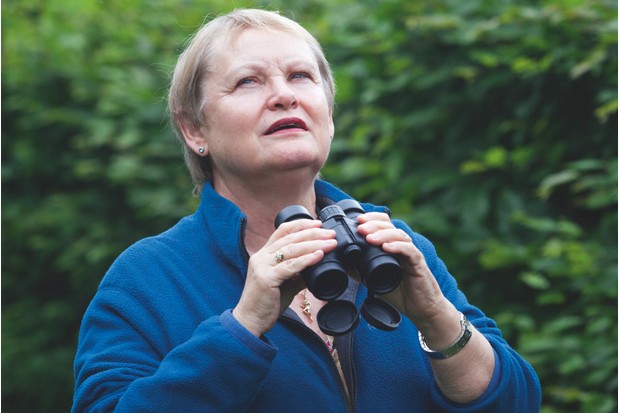Researchers from the University of Edinburgh, led by Tone Blakesley, have been studying 131 recently discovered trackways made by various dinosaurs from the Middle Jurassic period in the submerged waters of an ancient subtropical lagoon in Scotland.
The footprints at Prince Charles’ Point on the Trotternish Peninsula in the north of the Isle of Skye appear to have been made 167 million years ago by two types of dinosaur – large carnivorous theropods such as megalosaurus with their distinctive three-toed clawed footprints, and equally large plant-eating sauropods such as cetiosaurus, with flat circular prints the size of car tyres.
- How were dinosaur footprints preserved?
- Why are the cliffs of the Jurassic Coast filled with dinosaur fossils?
The two species were apparently co-existing and wading around in the lagoons, although they appear to have inhabited distinct territories within them. The researchers describe the actions of the dinosaurs as “cumulative milling behaviour”, suggesting they were spending time in the area, not just passing through. The fact that the plant-eaters were larger examples of the sauropoda family might explain why they appeared to be living harmoniously in close proximity to a large number of predatory dinosaurs.
The two sets of species left their footprints in the sandy bottoms of the ancient brackish lagoons and they were subsequently covered by soft sediment. This then hardened, sandwiching the tracks within the layers, only for them to be exposed again by erosion.
- Dinosaur teeth: what were they like, how ferocious were they - and what do they tell us about a dinosaur's diet?
- 5 British dinosaurs you've (probably) never heard of
Globally, well-preserved dinosaur tracks are very rare, so these lines of prints are giving scientists important information about the everyday behaviour of certain dinosaur groups and how they were distributed in the landscape at an important time in their evolution. Although they are relatively short – the longest is just over 12m (40ft) – they are the longest continuous stretches of dinosaur tracks yet to be found on Skye.
Aside from giving the scientists an opportunity to record a variety of dinosaur gaits and walking styles, the tracks revealed a surprising number of theropods, more than might have been expected. There was also a lack of footprints of smaller species of theropod or sauropod, or other dinosaurs that paleontologists might have been expected to be there: stegosaurs such as loricatosaurus and ornithopods such as iquanodon.
It may be that the environmental conditions that existed in the shoreline lagoons at Prince Charles’ Point were more conducive to those two particular dinosaur groups. A study of the fossils of other organisms that lived in that area at the time, small marine invertebrates and plant life, seems to indicate that the lagoons were higher in freshwater content than has been found at other parts of the coast. So it may be that the food sources suited the larger dinosaurs, particularly the theropods.
The researchers certainly concluded that there were more theropods in the Prince Charles’ Point environment than they would have expected, which is realigning thinking about the Middle Jurassic period in Scottish history.
Top image: A new Middle Jurassic lagoon margin assemblage of theropod and sauropod dinosaur trackways from the Isle of Skye, Scotland. Credit: PLOS One (2025). DOI: 10.1371/journal.pone.0319862
